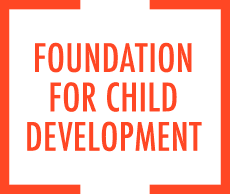https://www.fcd-us.org/child-well-being-index-cwi-2007-report/
Following an upward swing that peaked in the early part of this decade, the progress being made improving American children’s quality of life has come to a standstill, according to the Foundation for Child Development’s 2007 Child and Youth Well-Being Index (CWI), an annual comprehensive measure of how children are faring in the United States.
This stall can be found across the majority of the CWI’s seven domains, with the exception of children’s health, which continues its dramatic decline, and in the area of children’s safety. The safety domain continues its encouraging upward trend, buoyed by a general decline in teen pregnancy, violent crime, and drug and alcohol use among youth. Viewed over the last six years, the Index CWI as a whole has dipped and risen by only fractional amounts with the exception of an upsurge in 2002, attributed to community and family response to the 9⁄11 tragedies.
The troubling stall we’re seeing in the CWI over the past five years tells us that, even in relatively prosperous times for the country, we cannot assume children’s quality of life will automatically improve, said Kenneth Land, project coordinator of the CWI, and a sociology professor and director of the Center for Population Health and Aging at Duke University.
The most disturbing finding in the domains of the CWI is that children’s health has sunk to its lowest point in the 30-year history of the Index, driven largely by an alarming rise in the number of children who are obese and a smaller decline in child mortality rates than achieved in recent years.
The CWI also documents significant and persistent disparities among the well-being of white, African American and Hispanic children. Although trends in quality of life for white, African American, and Hispanic children have generally followed the same trajectory - going up or down together – – the gap between the well-being of whites and children of color did narrow in the late 90s. Now, however, this narrowing has stalled - along with improvement in the overall quality of children’s lives – – since 2002.
The measure of how well our children are doing is a measure of how we’re doing as a society. To keep children happy and healthy, we must, as a nation, take proactive steps at the policy and community levels to improve their lives, said Past President Ruby Takanishi, the sponsor of the CWI. The tide may be lifting all boats, but some kids, particularly poor children of color, are still stuck in steerage.
According to Land, one of the significant benefits of the Child Well-Being Index is that it offers policymakers and others a long-view snapshot of how children are doing over time.
So, for example, we now see from this year’s CWI that the uptick in children’s quality of life that occurred in 2002 was most likely an anomaly and a direct outgrowth of the nation coming together in response to the horrors of 9⁄11, Land said. In that year, parents got more involved in their children’s lives, and other support systems also kicked in. This added attention resulted in a rise in the ‘emotional and spiritual well-being’ and ‘social relationships’ domains. Unfortunately, these rises have stalled since 2002.
Methodology
The Child Well-Being Index is an evidence-based measure of 28 key national indicators across seven quality-of-life domains beginning with a base year of 1975. Data sources include the U.S. Census, Centers for Disease Control, National Center for Education Statistics, and other vital statistics and sample surveys.
